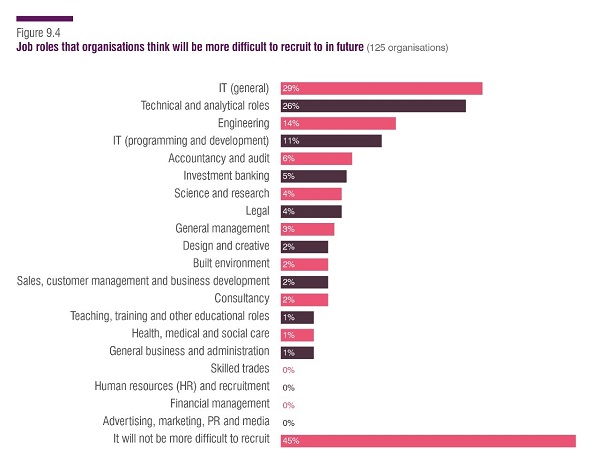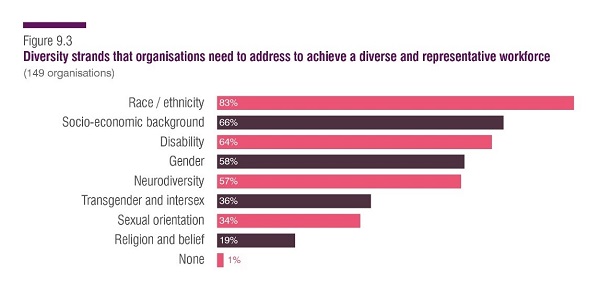ISE researcher Holly Hussein investigates our annual Student Recruitment Survey to offer some predictions for the future.
1. Vacancies back to pre-pandemic levels
Despite growth in all areas of student recruitment in the last year, vacancies were not yet at pre-pandemic levels for any types of hires except school and college leavers, which didn’t see a drop in recruitment during the pandemic.
Based on employer forecasts for student hiring this year, graduate and intern hiring is expected to be back at ‘normal’ levels by the end of the current recruitment cycle. The recovery of placement student recruitment is likely to continue to lag behind, but is also on an upward trajectory.
The sectors that anticipate the most growth by next year are Digital & IT (54%) and Retail, FMCG & Tourism (36%) for graduates, and Retail, FMCG & Tourism (55%) and Finance and Professional Services (37%) for school and college leavers.

2. Virtual recruitment and homeworking to continue
As discussed in a previous blog, virtual recruitment and homeworking dominated 2021. At the time of our annual Student Recruitment Survey, 93% of employers were recruiting predominately virtually and a large proportion of organisations were mainly working remotely. It is expected that both of these ways of working will continue, to some degree at least, as we move through 2022 and beyond.
Virtual recruitment can be cheaper and less time consuming than traditional recruitment methods generally, and can attract more diverse candidates by breaking geographical barriers. Almost half (48%) of employers think that their recruitment processes will be mainly virtual in the next five years. This was most common in the Finance & Professional Services (69%), Digital and IT (60%) and Energy, Engineering & Industry (60%) sectors.
Similarly, it is expected that homeworking will play a large role in many organisations post-pandemic.
A fifth of respondents believe that an increasing proportion of their entry-level staff will be based at home rather than in the office in the future, with 13% going as far to say that their student hires don’t need to live near to work, indicating they would visit the office very rarely, if at all.
Attitudes to homeworking vary quite dramatically by sector with the highest proportion of employers indicating that they will be hiring students who will work from home more often than in the office in the Digital & IT sector and the lowest proportion in the Legal sector.
3. Difficulties in recruiting certain roles
Respondents to our annual survey highlighted that there are certain types of job vacancies that they think they will struggle to fill in the future.
Technical roles, such as IT and analysis, were the most commonly mentioned – there is a growing need for these in the increasingly digital world, but skills shortages mean that the demand can not be met. Effective training of young people to fill these roles will be essential.

4. Organisations rebalance entry-level recruitment towards school and college leavers
Around a quarter (23%) of respondents indicated that they will be rebalancing their entry-level recruitment away from graduates and towards school and college leavers. Organisations in certain sectors were more likely to be doing this – 56% of those in the Built Environment sector, 40% in IT and 31% in Finance and Professional Services.
Employers increasing the proportion of hires who are school and college leavers are also likely to be those that already recruit a significant number of school and college leavers and have had positive experiences – all which has encouraged them to move further in this direction.
5. Organisations will continue to push for a diverse and representative workforce
Improving diversity within the workforce is very high on many organisations’ to-do lists. Most (65%) employers already have some formal diversity benchmarks in place that they are working towards. Also lots have tweaked their marketing and attraction approaches to reach a wider range of students and attract more candidates from under-represented groups. Despite this, more action is still required.
Almost all respondents highlighted that they have at least one diversity strand that they need to work on in the next five years with 83% of organisations aiming to concentrate on improving racial diversity in their company.



0 Comments